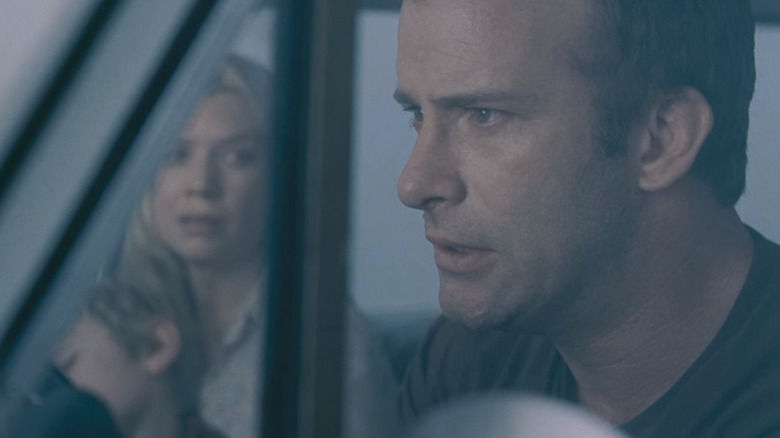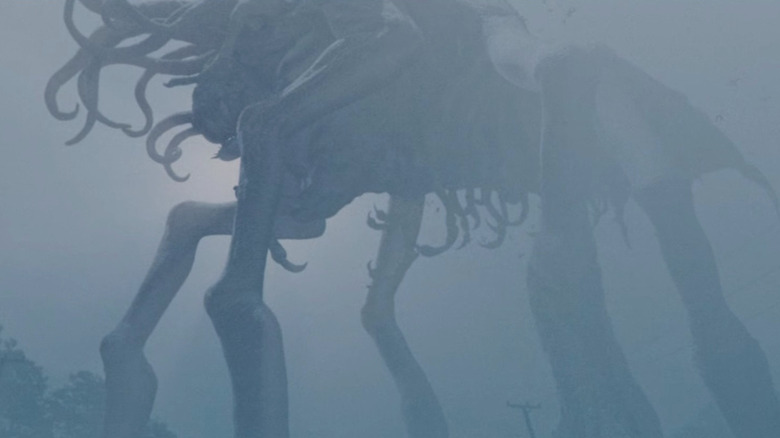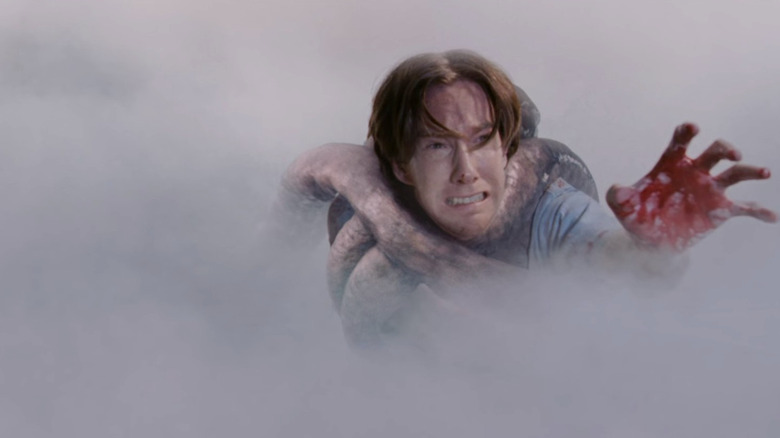One Of The Hardest Parts Of Filming The Mist Was The Mist Itself [Exclusive]
Naturally, when you make a horror movie called "The Mist," that mist is going to be pretty crucial to the final product. Making the titular mist look as real — and as menacing — as possible is key to the terror of the 2007 sci-fi-horror mashup directed by the enigmatic and talented Frank Darabont.
The film's special effects crew were determined to have as much of the mist itself be created with practical effects as possible, but that is definitely a feat easier said than done. The team went on to devise a plan to exert as much control over the actual mist itself as they possibly could. Cinematographer Rohn Schmidt told /Film's own Eric Vespe for his brand new — and awesomely massive — oral history of the film:
"Special effects person Darrell [Pritchett] had worked that out, tested it out with just positive air pressure and chilling the mist. He just walked around the set with the little remote control and he could literally just bring the mist in or push it back out just from standing there right on the set. It was really pretty remarkable."
Mass manipulation of minutiae
Interestingly enough, the crew had to get the stage to a completely "freezing" temperature in order to control the mist in a way that would give them free reign to shoot how they needed, according to producer Denise M. Huth:
"It had to do with the temperature of the room and the temperature of the mist, and that's how they could manipulate it like that. That's one of those things that you can do practically and make it look amazing. [...] I think that it was augmented a little bit when we were outside. When we were filming in the grocery store, basically half of the stage was the store and the other half was the parking lot. And the parking lot side of it, anytime we rolled was completely filled up with mist if we were shooting out those windows. And that was just part of the set."
It's an incredible power, to be able to wield such an unwieldable force and have it do your bidding. That said, Rohn Schmidt explained that making that practical control of the mist itself work on camera had everything to do with "the final finish, the final color correction, coloring of the show" as well as how it was originally lit during principal photography:
"It's almost like night vision, you can see into the mist if you drive too much contrast into there. That was the style there to have lots of contrast in photography, but really what the secret was, was to reduce the contrast and that gave it that milkiness that was always there and obscured. It's so dramatic to see people walk off and disappear into that mist. It's pretty creepy."
A strange feeling on set
The mist itself became an interesting presence on set because of how controlled it actually was. Schmidt added:
"If you think about it, it's just there. It didn't feel like it was moving around. Normally, I would prefer that you feel the atmosphere dancing, but that was really neat just to see it just hanging there. 'OK, this is just a weight hanging over us all the time.' If there's clouds, a breeze, it would almost imply that it was going to clear at some point, but nope, not going to happen. There were times they had it pumped in there so thick that you couldn't see your feet and it was weird. It's vertigo at that point."
Usually, the environment on a horror set is such that when the cameras stop rolling, the terror turns off. But what our deep-dive into "The Mist" tells us is that this film was pretty spooky even after Darabont called cut. After all, it isn't hard to imagine being totally freaked out on a soundstage when you can't find your way to the bathroom because of all the mist. It's good to know most folks who worked on "The Mist" were as creeped out as we were watching it.


